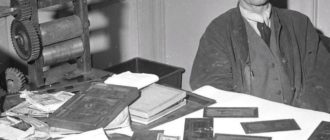
Precisionism (from the English precision – “precision” or “clarity”) – the direction of realism in American painting of the second quarter of the twentieth century, which is characterized by the clarity of geometric shapes and the severity of the color palette of paintings. Precisionism can rightfully be called the art of celebrating the industrial achievements of mankind, since the artists of this style usually chose deserted urban industrial landscapes as the main plot.
It has many similarities with other well-known areas of painting:
- cubism;
futurism;
magical realism.
Although most of the precisionists refused to acknowledge the influence of European art on their worldview.

Distinguishing features of precisionism
Precisionism at the peak of its popularity was often called cubic realism by contemporaries for the linearity of forms, as well as the sterility of space and objects in paintings. This trend was ambiguously accepted not only by critics, but also by the American public; it did not have a common program and a clear theoretical foundation.
And yet, the main distinguishing features of precisionism are:
- lack of dynamics in the plot;
- fragmentation of image planes;
- well-defined edges of objects;
- lack of color transitions;
- sterility of the depicted space.
Many critics have called precisionism too harsh to read and an unnecessarily sterile artistic style. There was never warmth and comfort in it, and the urban landscapes made a depressing impression on the audience. Supporters of this trend, by creating their works, tried to draw people’s attention to the problems of industrial society, albeit in a somewhat veiled form.

History
The history of precisionism dates back to the 20s of the twentieth century – the time when modernism and avant-gardism finally replaced conservative academism in American art. In the European artistic environment at that time, the peak of the popularity of futurism and cubism had already passed, but in the USA the innovative ideas inherent in these movements were only gaining strength.
Many American artists, inspired by the achievements of the industrial era, sought to reflect them in their works. The heroes of the works were bridges and factories, factory chimneys and skyscrapers, elevators and public buildings, tunnels and city streets.
For the first time the term “precisionism” appeared in widespread use after the exhibition “New Age” in 1926, and most historians attribute its authorship to the artist Charles Sheeler. Although critics were not very friendly about the new direction, it quickly formed a significant army of adherents.

Over the next 15 years, precision artists organized joint exhibitions in the United States, although due to the Great Depression, their views were not always understood. A significant part of American society did not like the praise of new technologies, especially since with the outbreak of World War II, in the global cultural environment, traditional views on art lost their meaning.
By the late 1940s, American audiences had lost interest in precision art. First, overseas, and then in Europe, the era of Abstract Expressionism began, in which there was practically no room for figurative painting.

The most famous precision painters
Many outstanding adherents of this movement deserve a separate mention in our article. And yet, the most famous precision painters are:
- Charles Rosen is a painter who became famous at the dawn of his career for beautiful impressionist landscapes. But already in the early 1920s, Rosen became interested in modernist art and became one of the pioneers of precisionism, remaining committed to this style until the end of his life.
- Charles Sheeler, the man behind the pioneering “quasi-photographic” painting style, and a successful commercial photographer. Schieler painted many paintings on the basis of photographs taken with his own hand, and these were not only cityscapes, but also original still lifes.
- Charles Demuth is an artist with a great sense of humor and very poor health. Demuth in his work often turned to the genre of not only urban, but also rural landscapes, using oil and watercolors in his paintings.
- Joseph Stella is an Italian by birth who relocated to the United States at the age of 19. Stella was an enthusiastic personality, along with precision works in his creative heritage there are works created in the styles of abstractionism, futurism and surrealism.

Precisionism is a fine example of typically American fine art. Despite the large scale of this movement in the United States. European painters did not support the innovative ideas of their overseas colleagues. And these days, precision paintings are much more in demand among American collectors than in the rest of the world.








